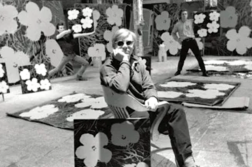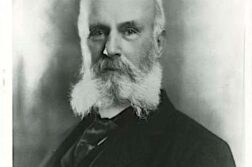IN 1951, when I was 27 years old, working intermittently at menial jobs and trying to keep writing poetry, a fellowship came through for the Yaddo artists’ retreat in Saratoga Springs in upstate New York. Poor young poet that I was, the prospect of being able to write for two months without worrying about money was blissful.
Delivered by a taxi to the back door of the impressive Yaddo mansion with my shabby cardboard suitcase and portable typewriter, I was met by a large, fair-haired, apple-cheeked but naughty-eyed Scandinavian-American man with a ski-jump nose, who served as the host, greeting new guests and getting them settled—in return for which he got room and board plus a tiny stipend for his painting supplies. He showed me to my room in the faux-baronial edifice, built in the 1860’s by the Spencer Trasks, who, loaded with loot from railroads and the stock market, filled its 55 rooms with “authentic” imitation furnishings brought back from their travels abroad, and set themselves up as patrons of the arts.
I would soon learn that this versatile fellow named Clifford Wright, with whom I instantly became friends, saw his job not only as making guests comfortable and listening to their problems, as he did mine, but making love to everyone who seemed to need it, both men and women. He also claimed to masturbate four times a day, often on his paintings, which lay scattered over the floor of his studio and which he would pick up from time to time and daub at, paint mixing in with semen, something of which Clifford, a rather juicy-looking fellow, had plenty!






